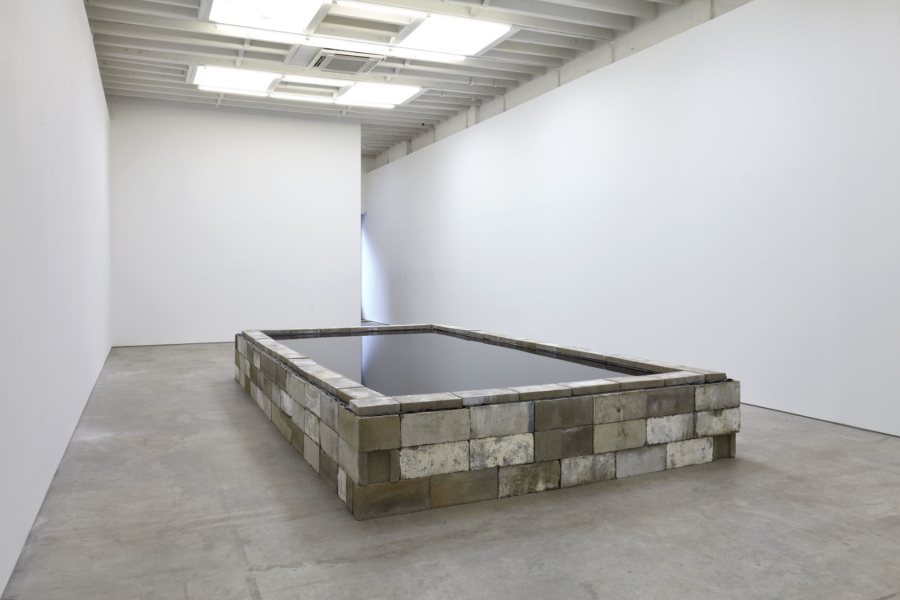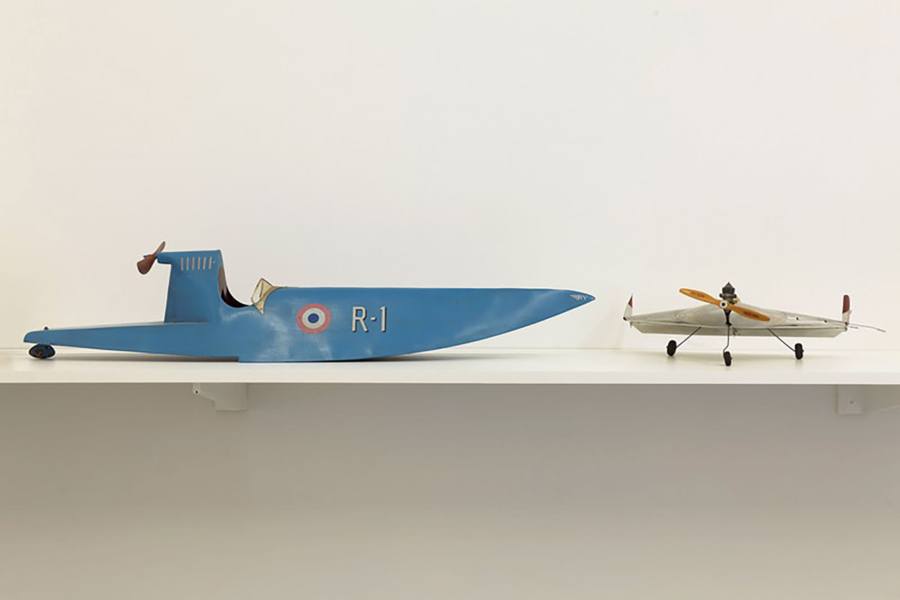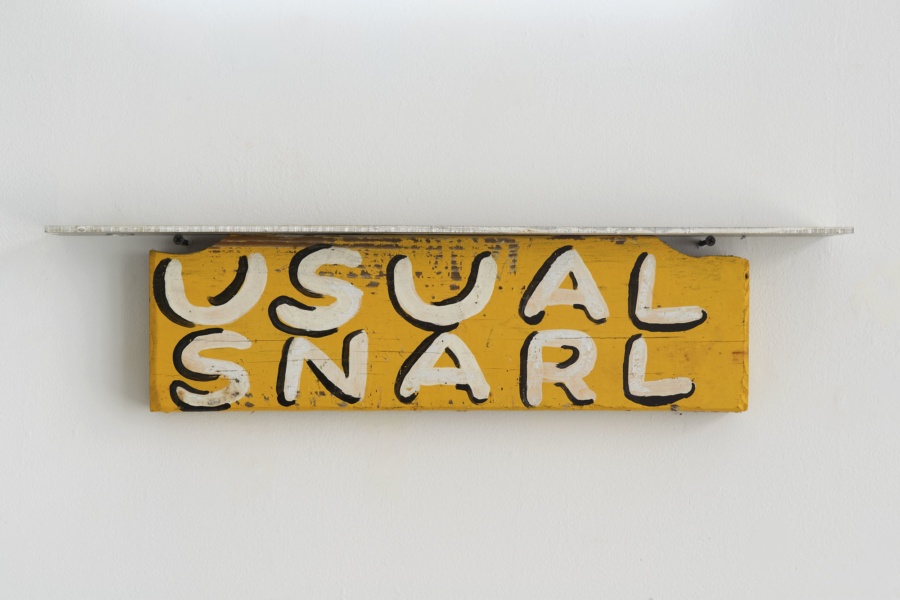February 13, 2020
Download as PDF
View on Brooklyn Rail

Robert Grosvenor, Untitled, 2020. Concrete blocks, rubber liner, water, 216 × 120 × 36 inches.
Robert Grosvenor’s latest exhibition at KARMA—his third with the gallery—continues the artist’s career-long exploration of materiality, visual perception, and minimalist aesthetics. Influenced early in his career by the works of Lucio Fontana and Piero Manzoni, Grosvenor creates sculptures that similarly challenge the boundaries between everyday objects and artistic materials. His work is consistently mysterious yet always relatable. Grosvenor’s installation at KARMA includes a large pool of water that occupies the entirety of the main gallery, with an additional room in the back displaying a variety of model boats, airplanes, and cars that have been deftly altered in minute ways.

Robert Grosvenor, Untitled, 2020. Found objects, Melamine shelves, plywood brackets, metal mending plates dimensions variable. Courtesy the artist and Karma, New York.
Untitled (2020), is a long rectangular box measuring 18 by 10 by 3 feet, made entirely of gray concrete blocks, lined with rubber, and filled with water. It is eerie yet simultaneously calming, as viewers can catch a glimpse of their own reflections superimposed on the rubber below the surface of the water. In the increasingly upscale, luxury-oriented version of itself that New York is slowly becoming, Grosvenor’s brick-and-mortar approach feels distinctly like a recollection of the Lower East Side’s rugged history, filled with tenements and hardscrabble living. In combination with the plain white walls and stone gray floor of the gallery, Untitled creates a unique effect, feeling out of place and unsettling while also dominating the room with its sheer presence. Perhaps the untitled work featured in the gallery’s window—a dark yellow fragment of wood suspended from a flattened piece of aluminum, upon which Grosvenor has written “usual snarl” in black and white—is meant as an admission of aggression to viewers entering the space. “Snarl” connotes a vicious aggressiveness, the response of a cornered animal about to make an attempt at escape. “Usual” tames the word’s aggression, placing it within the realm of the known.

Untitled, 2020, Wood, paint and aluminum
The models that occupy KARMA’s back room are presented on melamine shelves, and operate as found objects within the same realm of relatability as Grosvenor’s concrete pool of water. At first glance, the objects seem quite normal. They are aesthetically pleasing, vary in size and color, and are clearly identifiable as collectible models of vehicles or modes of transportation. These works recall the fact that Grosvenor himself builds model boats and cars as a hobby—they also call back to a previous show at KARMA. Held in 2017, this exhibition presented Grosvenor’s sculpture Three Car Unit (2012–2017): three cars that have been stripped down and altered, teetering on the edge of abstraction and challenging the conventional terms of automotive beauty. The works included in the present show have a similar effect. As one stands in the gallery, taking in each object on its own terms, nuances and deviations slowly spring to life. We find, for example, cars with no passenger seats or headlights, planes devoid of landing gear, and helicopters that can’t possibly fly. Grosvenor has transformed these objects into sculptures, manipulating the relationship between perceived scale, movement, and functionality. The familiar is altered and subtly reframed, both in terms of its use and its aesthetic value. Grosvenor’s vehicles are absolutely absurd, yet remain almost serviceable. Once conventional models suitable for enthusiasts, they now function as investigations into the art of unfamiliarity. Both beautiful and foreign, they call into question whether such objects were ever really practical in the first place.



